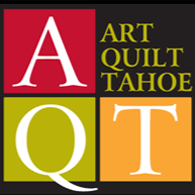Instructor: Sue Benner
The supply list has been provided by the instructor. If you have any questions, please contact the instructor at benner.sue@gmail.com
Supplies Participants Should Bring
INSPIRATIONAL IMAGES or source materials for your work in class
- 3-5 photographs of classic landscapes (e.g., land, water, sky or land, mountains, sky) printed out on letter-sized paper or similar.
- A reproduction (or a book) of a landscape painting that is done in a style you admire and really pushes color and abstraction.
- Sue will have source material on hand if you don’t know what to bring.
Note: I will teach a very simple way of enlarging a landscape composition using a grid. But if you know which images you want to work on for your project(s) and you are unsure of your drawing skills, please go to a copy shop and enlarge it either as a photo or line drawing. The enlarged size can be up to 30” on the longest side (black and white print on inexpensive paper is fine). Most people do NOT come with a full-scale enlargement, but it can be so helpful.
FABRIC! Almost anything goes as far as fiber content: cotton, silk, rayon, even polyester can be used in fused collage. Please pre-wash your fabrics if possible. Washed fabrics will fuse, paint, and print better.
If you want to interpret your landscape with realistic colors, keep that in mind when choosing your fabrics. Or, you can use totally crazy, unrealistic color. About 25-30 different fabrics, fat quarter or equivalent size is good for managing in class with the painting and printing
Here are some suggestions,
- Hand-dyed cottons, commercial cotton batiks
- A range of solids and near solids, as well as small prints and large prints
- Recycled and thrifted garments to cut up, washed, of course
- Shiny, textured, lacy, or embroidered fabrics (these fabrics paint and print in interesting ways)
- Sheers like chiffon and organza are great for landscape effects
- If you like working with a “jelly roll” of fabric to provide variety in color, I suggest preparing in this way: Fuse strips of fabric by lining them up on Wonder-Under with the tiniest bit of overlap and iron down. This “sheet” of 2” strips can be printed in this form and later cut apart.
- 2 yards of white cotton fabric (must be pre-washed). Half will be used for painting and half to cover your ironing and printing surface
- Fabrics/scraps/leftovers from other projects you have been hoping to use sometime, fused or not
- Don’t sweat the fabric choice too much. We can work with almost anything! Really!
- 2-3 yards of backing fabric (for the back side of your quilt)
- Scraps of all sorts, especially long strips, selvedges, sari strips, raw edges, etc., with or without Wonder-Under on them. Hint: Start saving these scraps now for your landscape class!
If at all possible, fuse some fabric before the class. Fabric can be printed with or without fusible on it. BUT, do not fuse any of the white fabric for painting.
FUSIBLE-
- 15-20 yards of 805 Pellon Wonder-Under or equivalent in other fusible product like
- MistyFuse or
- Soft Fuse
GLUE- your favorite fabric glue or glue stick
Release Paper/Release Surface
- Roll of parchment paper (Reynolds white smart-grid the best)
- Teflon baking sheet or Goddess Sheet (MistyFuse)
Batting
- Twin-size 72×93” or equivalent in 2-4 pieces, 100% cotton if possible, like Quilters Dream Cotton
- Half of this batting will be used to make your quilts and half to pad your ironing/printing table.
Art Supplies
- one or two soft-lead pencils (2HB Ticonderoga good, my favorite)
- two soft-lead, colored pencils (like Prismacolor), or your best approximation of these pencils
- 10 sheets letter size paper, a few sheets tracing paper
- thick and thin Sharpie
- masking/blue tape
- 3 assorted paint brushes (e.g., 2, 1, and 0.5 inch wide)
- small tub for water (like 1 quart yogurt container)
- small snack-sized covered containers for paint (only of you have some)
- spray bottle or mister for water
- roll of paper towels or a few rags
- smock, apron, or old shirt to protect your clothes from paint
Tools
- sharp scissors (small and large)
- cutting mat
- rotary cutter (a large and very small, 18-mm, would be ideal)
- gridded ruler (24” x 6” or larger is good)
- gridded square (6 ½” or larger)
- Iron
- Straight pins
Optional to Bring
- Sewing Machine (completely optional—most people don’t sew in class)
- Digital Camera (your phone is fine and already with you)
- Press Cloth of 100% cotton, low lint fabric like Pima cotton is best
- Example of your artwork to show to the class
- Tacking or sealing iron
IF NOT SUPPLIED BY TEACHING VENUE please bring extension cord, surge protector/power strip, design wall, additional lighting or lamp (please contact the venue about this, not me)
SUPPLIES I WILL BRING:
- Pile of recycled and thrifted fabrics.
- Paint and palettes
- Printing surfaces
- Paint brushes
- Tools
- Plastic
- Other art supplies
